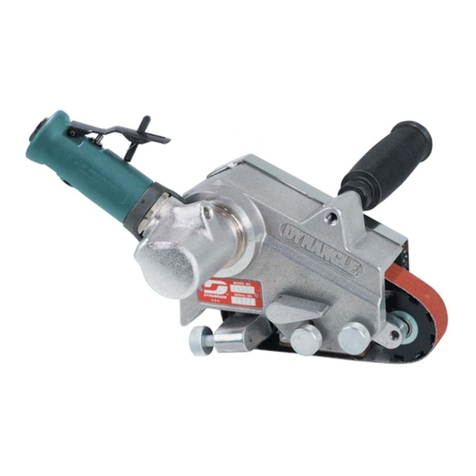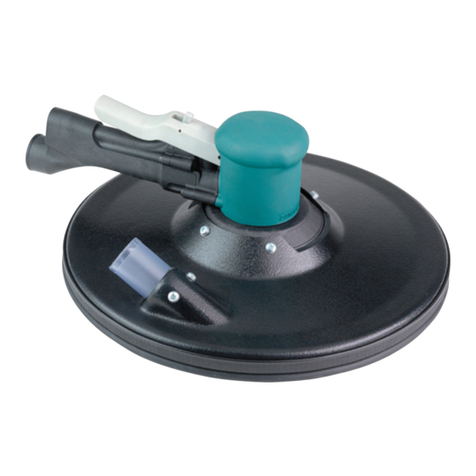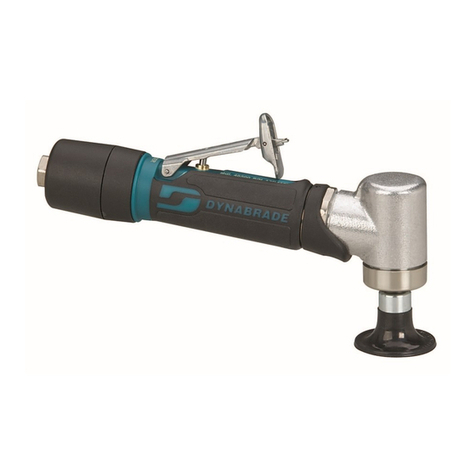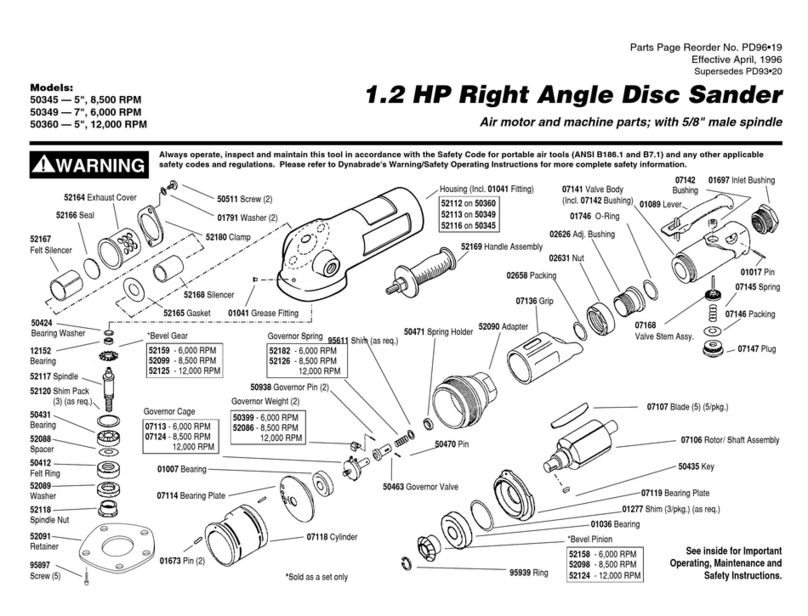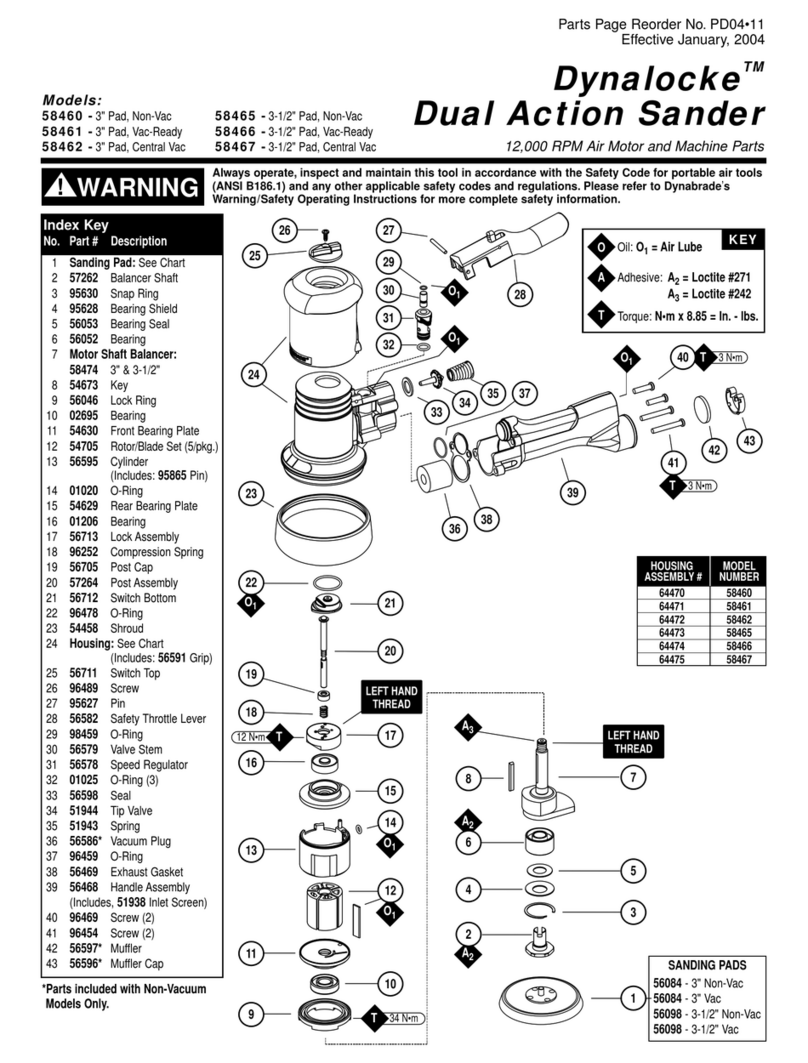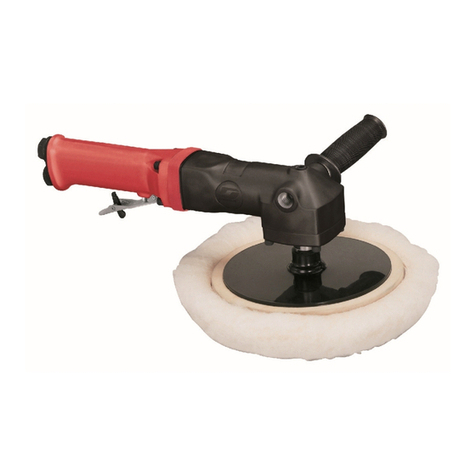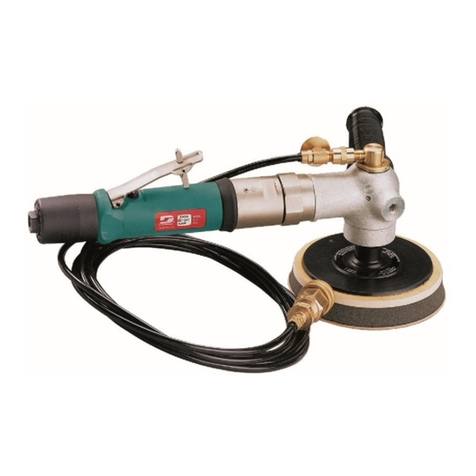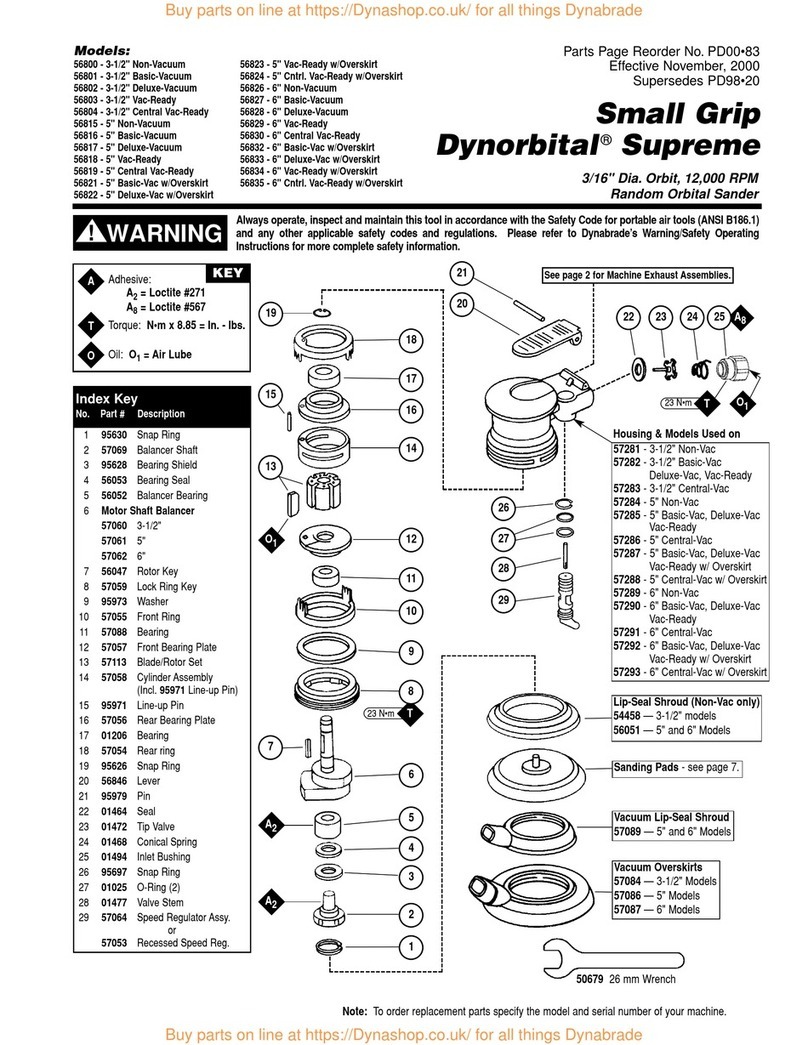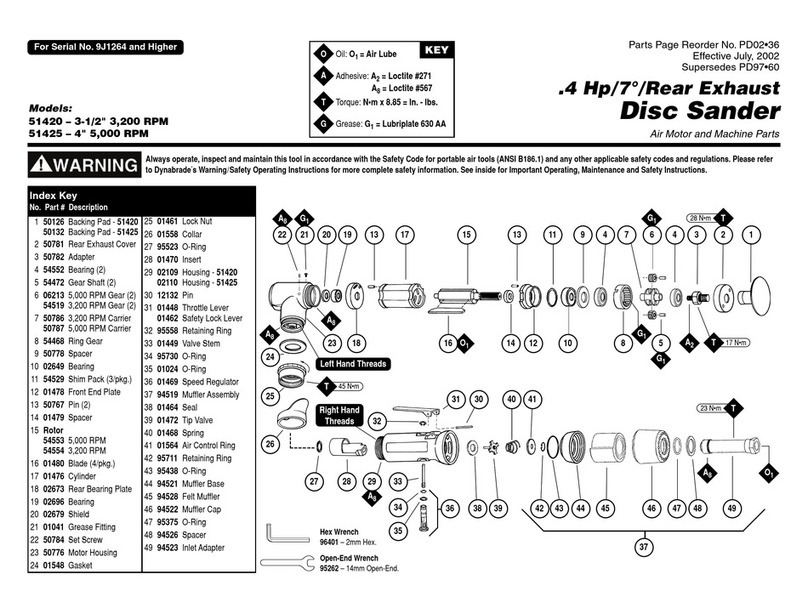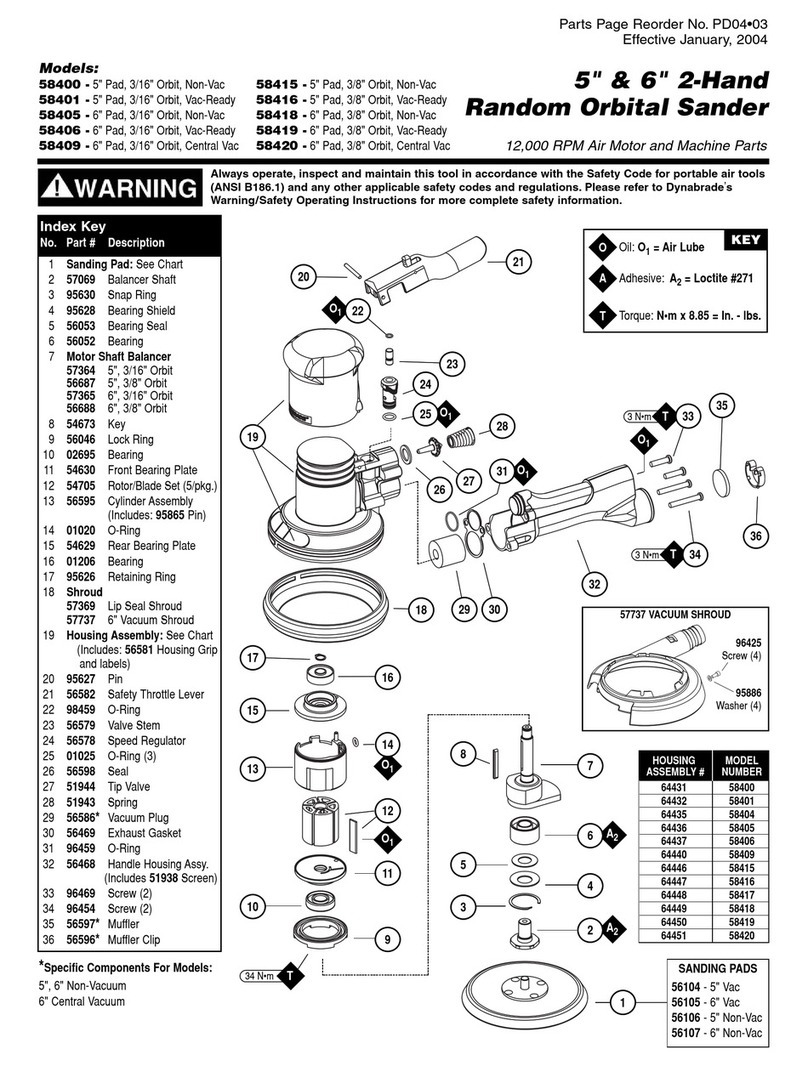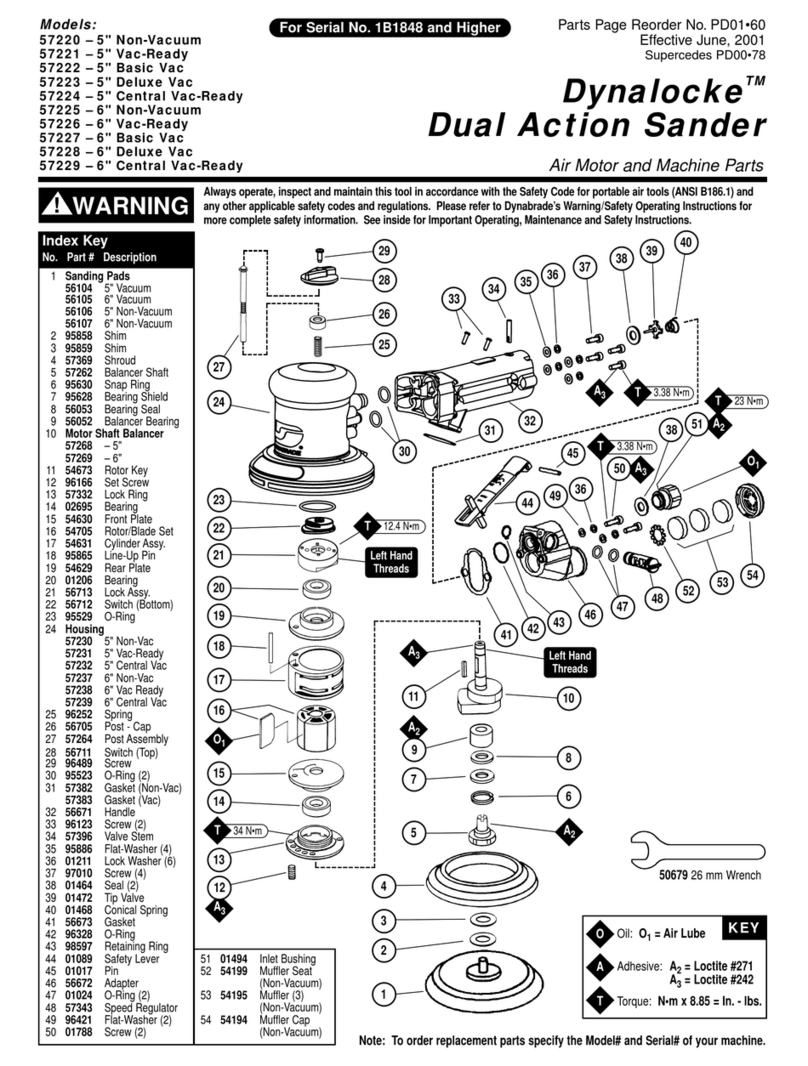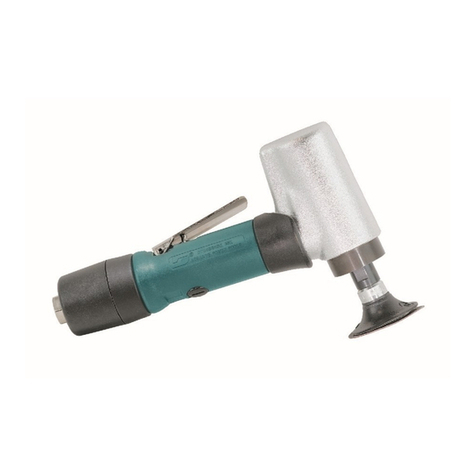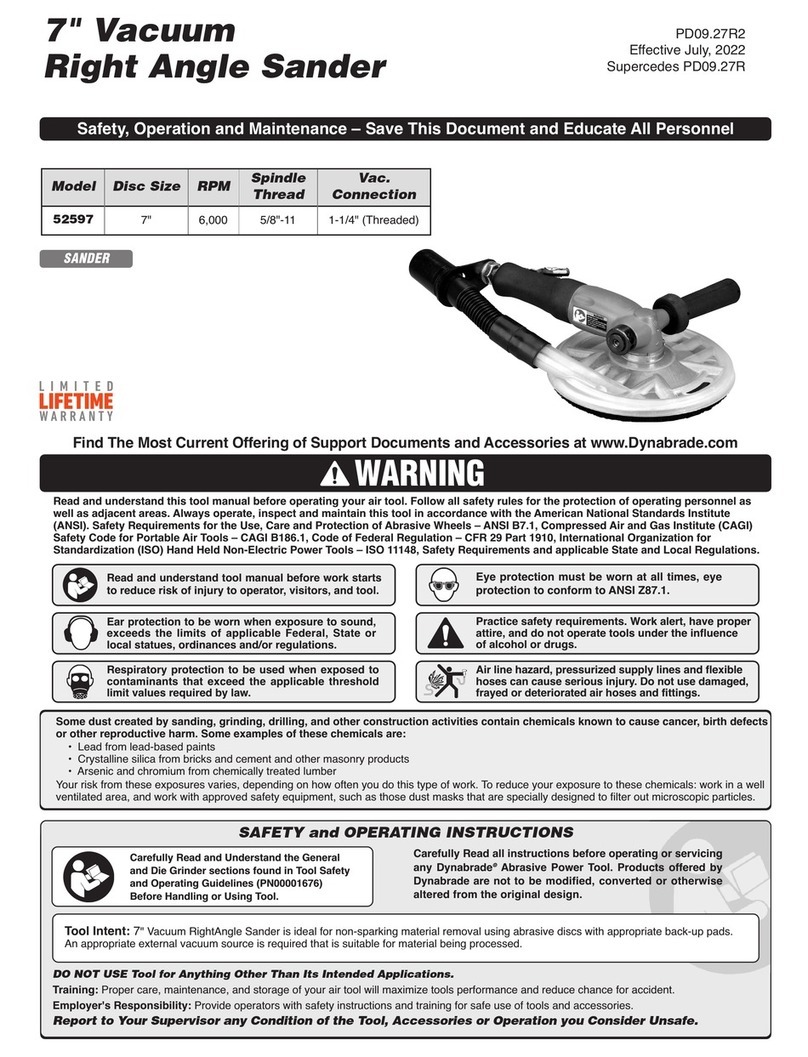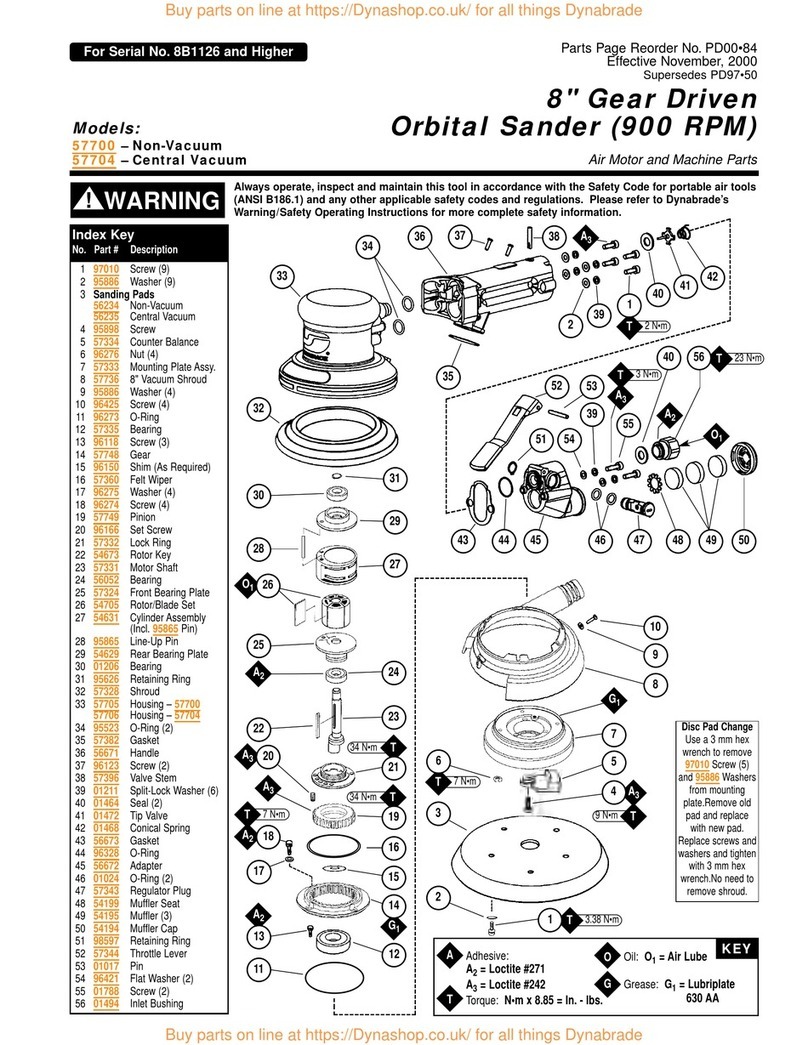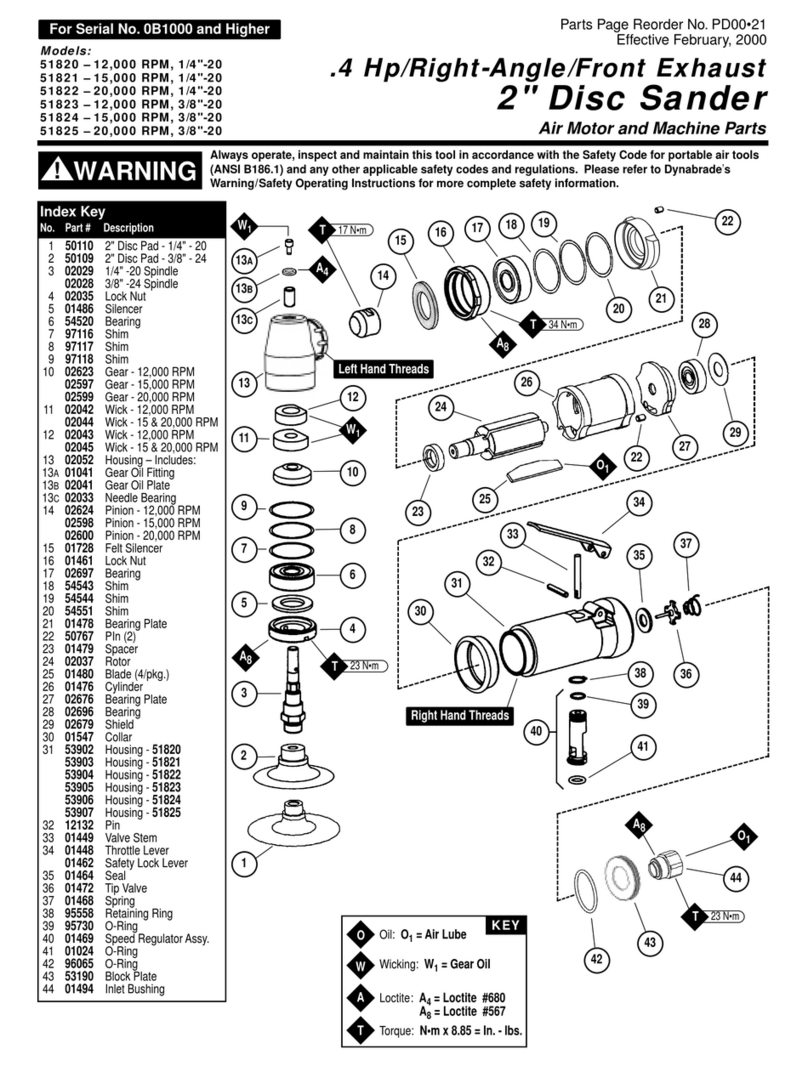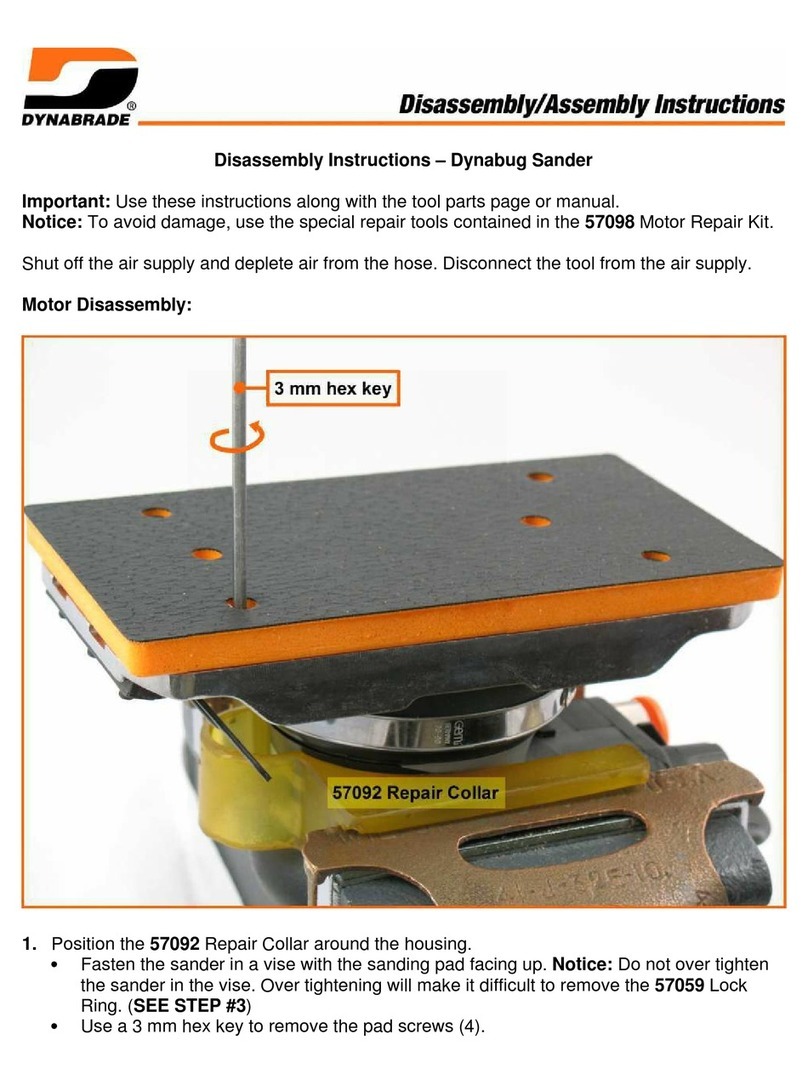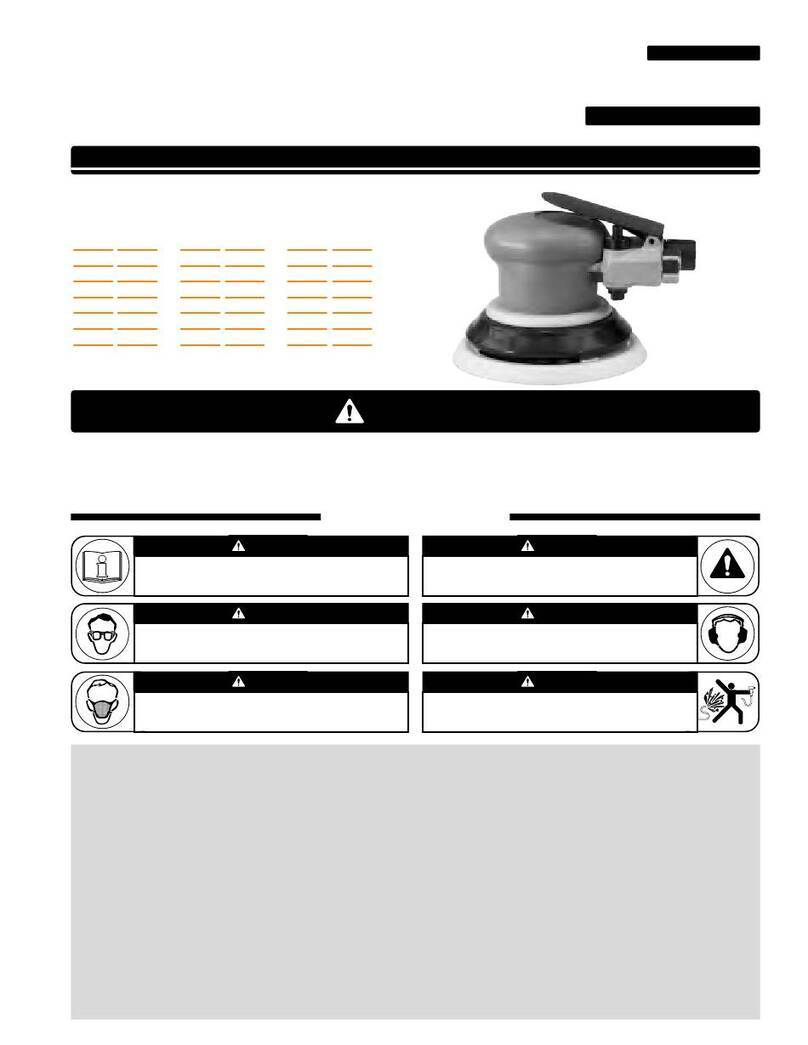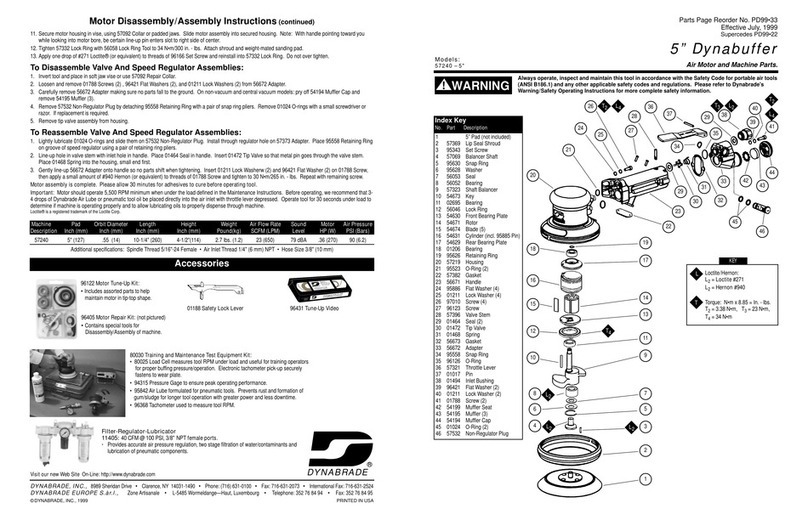
2
Electrical Safety (Continued)
5. When operating a power tool outdoors, use an extension cord suitable for outdoor use. Use of a cord suitable for outdoor use reduces the risk of electric
shock.
6. If operating a power tool in a damp location is unavoidable, use a residual current device (RCD) protected supply. Use of a RCD reduces the risk of electric shock.
Personal Safety
1. Stay alert, watch what you are doing and use common sense when operating a power tool. Do not use power tool while you are tired or under the influence of
drugs, alcohol, or medication. A mome t of i atte tio while operati g power tools may result i serious perso al i jury.
2. Use personal protective equipment. Always wear eye protection. Protective equipme t such as dust masks, o -skid safety shoes, hard hat, or heari g protec-
tio used for appropriate co ditio s will reduce perso al i jury.
3. Prevent unintentional starting. Ensure the switch is in the off-position before connecting to power source and/or battery pack, picking up or carrying the tool.
Carryi g power tools with your fi ger o the switch or e ergizi g power tools that have the switch o i vites accide ts.
4. Remove any adjusting key or wrench before turning the power tool on. A wre ch or a key left attached to a rotati g part of the power tool may result i perso al
i jury.
5. Do not overreach. Keep proper footing and balance at all times. This e ables better co trol of the power tool i u expected situatio s.
6. Dress properly. Do not wear loose clothing or jewellery. Keep your hair, clothing and gloves away from moving parts. Loose clothes, jewellery or lo g hair ca
be caught i movi g parts.
7. If devices are provided for the connection of dust extraction and collection facilities, ensure these are connected and properly used. Use of dust collectio ca
reduce dust-related hazards.
8. Do not let familiarity gained from frequent use of tools allow you to become complacent and ignore tool safety principles. A careless actio ca cause severe
i jury withi a fractio of a seco d.
Power Tool Use and Care
1. Do not force the power tool. Use the correct power tool for your application. The correct tool will do the job better a d safer at the rate for which it was de-
sig ed.
2. Do not use the power tool if switch does not turn it on and off. A y power tool that ca ot be co trolled with the switch is da gerous a d must be repaired.
3. Disconnect the plug from the power source and/or the battery pack from the power tool before making any adjustments, changing accessories, or storing
power tool. Such preve tative safety measures reduce the risk of starti g the power tool accide tally.
4. Store idle power tools out of the reach of children and do not allow persons unfamiliar with the power tool or these instructions to operate the power tool.
Power tools are da gerous i the ha ds of u trai ed users.
5. Maintain power tools. Check for misalignment or binding of moving parts, breakage of parts and any other condition that may affect the power tool's operation.
If damaged, have the power tool repaired before use. Ma y accide ts are caused by poorly mai tai ed power tools.
6. Keep cutting tools sharp and clean. Properly mai tai ed cutti g tools with sharp cutti g edges are less likely to bi d a d are easier to co trol.
7. Use the power tool, accessories and tool bits etc. in accordance with these instructions, taking into account the working conditions and the work to be
performed. Use of the power tool for operatio s differe t from those i te ded could result i a hazardous situatio .
8. Keep handles and grasping surfaces dry, clean and free from oil and grease. Slippery ha dles a d graspi g surfaces do ot allow for safe ha dli g a d co trol
of the tool i u expected situatio s.
Service
1. Have your power tool serviced by a qualified repair person using only identical replacement parts. This will ensure that the safety of the power tool is maintained.
SPECIFIC SAFETY RULES
Safety Warnings Common for Sanding and Polishing Operations:
1. Hold power tools by insulated gripping surfaces only when performing an operation where the cutting tool may contact hidden wiring or its own cutting acces-
sory cord. Co tact with a “live” wire will make exposed metal parts of the tool “live” a d shock the operator.
2. This power tool is intended to function as a polisher. Read all safety warnings, instructions, illustrations and specifications provided with this power tool. Failure to
follow all i structio s listed below may result i electric shock, fire a d/or serious i jury.
3. Operations such as grinding, wire brushing, or cutting-off are not recommended to be performed with this power tool. Operatio s for which the power tool was
ot desig ed may create a hazard a d cause perso al i jury.
4. Do not use accessories which are not specifically designed and recommended by the tool manufacturer. Just because the accessory ca be attached to your
power tool, it does ot assure safe operatio .
5. The rated speed of the accessory must be at least equal to the maximum speed marked on the power tool. Accessories ru i g faster tha their rated speed
ca break a d fly apart.
6. The outside diameter and the thickness of your accessory must be within the capacity rating of your power tool. I correctly sized accessories ca ot be
adequately guarded or co trolled.
7. Threaded mounting of accessories must match the grinder spindle thread. For accessories mounted by flanges, the arbor hole of the accessory must fit the lo-
cating diameter of the flange. Accessories that do ot match the mou ti g hardware of the power tool will ru out of bala ce, vibrate excessively a d may
cause loss of co trol.
8. Do not use a damaged accessory. Before each use inspect the accessory such as abrasive wheels for chips and cracks, backing pad for cracks, tear or excess
wear, wire brush for loose or cracked wires. If power tool or accessory is dropped, inspect for damage or install an undamaged accessory. After inspecting and
installing an accessory, position yourself and bystanders away from the plane of the rotating accessory and run the power tool at maximum no-load speed for
one minute. Damaged accessories will ormally break apart duri g this test time.
9. Wear personal protective equipment. Depending on application, use face shield, safety goggles or safety glasses. As appropriate, wear dust mask, hearing pro-
tectors, gloves and workshop apron capable of stopping small abrasive or workpiece fragments. The eye protectio must be capable of stoppi g flyi g debris
ge erated by various operatio s . The dust mask or respirator must be capable of filtrati g particles ge erated by your operatio . Prolo ged exposure to high
i te sity oise may cause heari g loss.
10. Keep bystanders a safe distance away from work area. Anyone entering the work area must wear personal protective equipment. Fragme ts of workpiece or of
a broke accessory may fly away a d cause i jury beyo d immediate area of operatio .
11. Position the cord clear of the spinning accessory. If you lose co trol, the cord may be cut or s agged a d your ha d or arm may be pulled i to the spi i g ac-
cessory.
12. Never lay the power tool down until the accessory has come to a complete stop. The spi i g accessory may grab the surface a d pull the power tool out of your
co trol.
13. Do not run the power tool while carrying it at your side. Accide tal co tact with the spi i g accessory could s ag your clothi g, pulli g the accessory i to
your body.
14. Regularly clean the power tool’s air vents. The motor’s fa will draw the dust i side the housi g a d excessive accumulatio of powdered metal may cause elec-
trical hazards.
15. Do not operate the power tool near flammable materials. Sparks could ig ite these materials.
16. Do not use accessories that require liquid coolants. Usi g water or other liquid coola ts may result i electrocutio or shock.
(continued on page 4)
2
